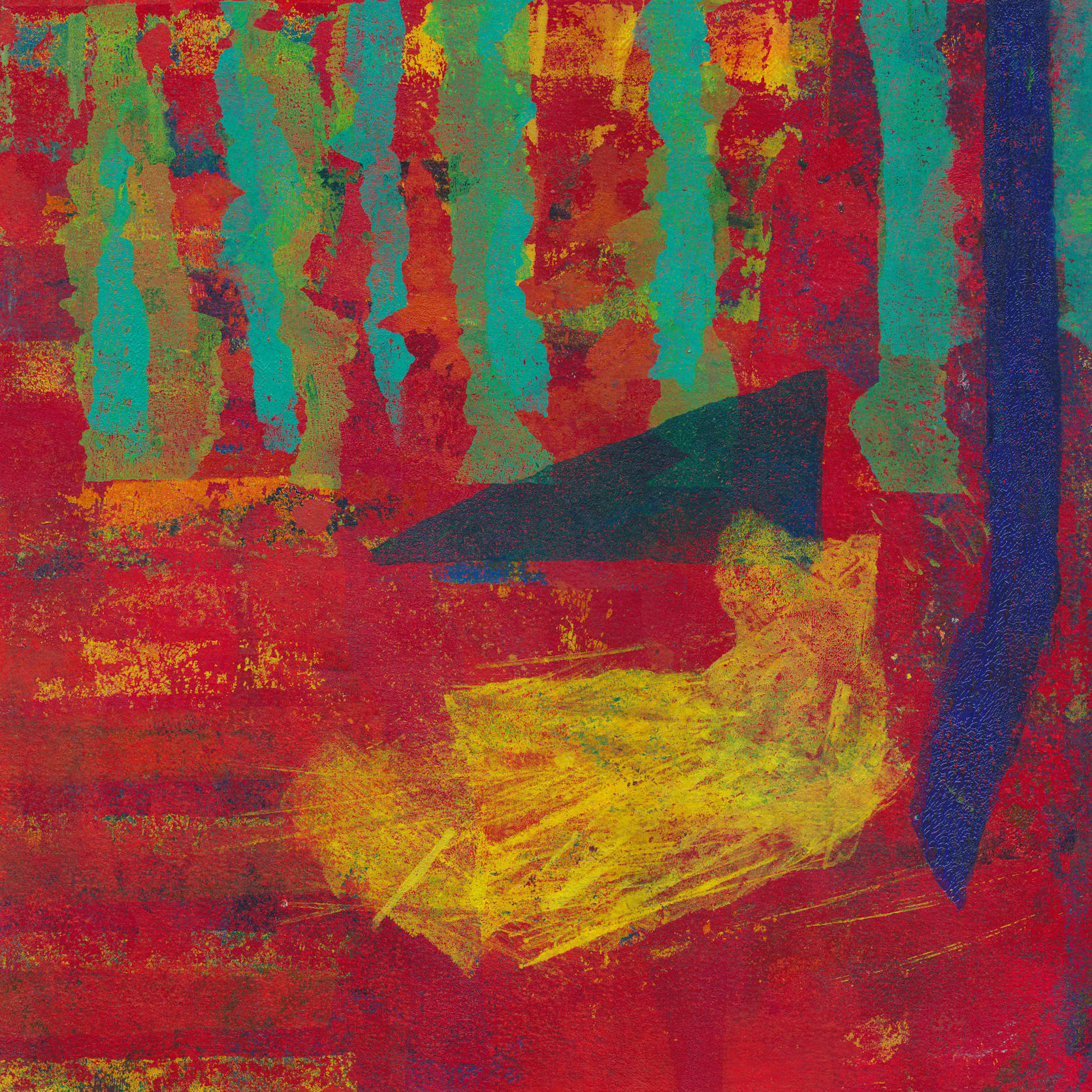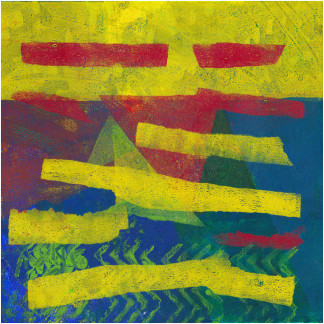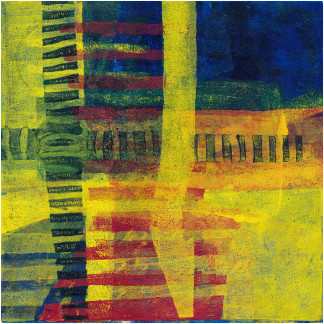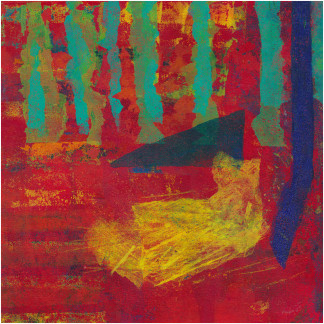Description
This was initially pure abstract. I had added the turquoise and blue shapes over the dark red and yellow, but felt it was missing something. At that stage the turquoise and blue were at the bottom. I added the yellow in two blocks then merged them. I still wasn’t happy with the outcome. Then I tried my usual strategy of rotating the print. I did this in stages – through 90° then through 180°. At this point the amorphous yellow blob suddenly took shape and the print fell together. The title comes from an English proverb.
The print is also a good example of my normal manner of working. I work intuitively in a process that builds up the layers incrementally. Each new layer responds to what has been created by previous layers. This means that my prints take several sessions to become complete.
I often start with an unplanned assemblage of colours created by cleaning up the residue on the plate. I am very drawn to the way in which abstract, almost accidental layers of colour can be transformed into a harmonious image. Often, knowing when to stop is the most difficult stage. It usually takes me a couple of weeks after the last layer is added before I’m sure a given print is complete.
The print is about 30 cm square. It is mounted on a cradled wooden panel, with black painted edges, ready to hang on your wall.
During lockdown, I have made a series of similar colourful abstract monotype prints. They represent a new direction for my work, one I intend to continue to explore for a good while yet. Many draw their inspiration from real places, others while still abstract, have a link back to the world of experience, and yet others are pure abstract without external references beyond the broad ideas of harmony and balance.
What is a gel print?
Monotype prints in general are made by drawing or painting on a smooth, non-absorbent surface. This surface, sometimes called the matrix, was historically a copper etching plate. In contemporary work other materials are often used, such as acrylic sheet. The image on the matrix is then transferred onto a sheet of paper by pressing the two together. This usually requires a print press. Monotypes can also be created by inking an entire surface and then, using brushes or rags, removing ink to create light areas in a field of opaque colour. This is then pressed together with a sheet of paper to make the print.
The specific process I used for this print was gel printing (or Gelli but this is a trademark). The matrix in this case is a soft synthetic gel. I apply the paint to the gel sheet with rollers or brushes. The area to which the paint is applied can be controlled by masks and stencils. The rolled out paints can also be drawn into or textured in various ways. This process is repeated until I’m happy with the image.
Some of my prints made this way have over 20 separate full or partial layers. The nature of the process allows for both intense bright colours and subtle variations in colour as well as tangible physical texture.







Reviews
There are no reviews yet.